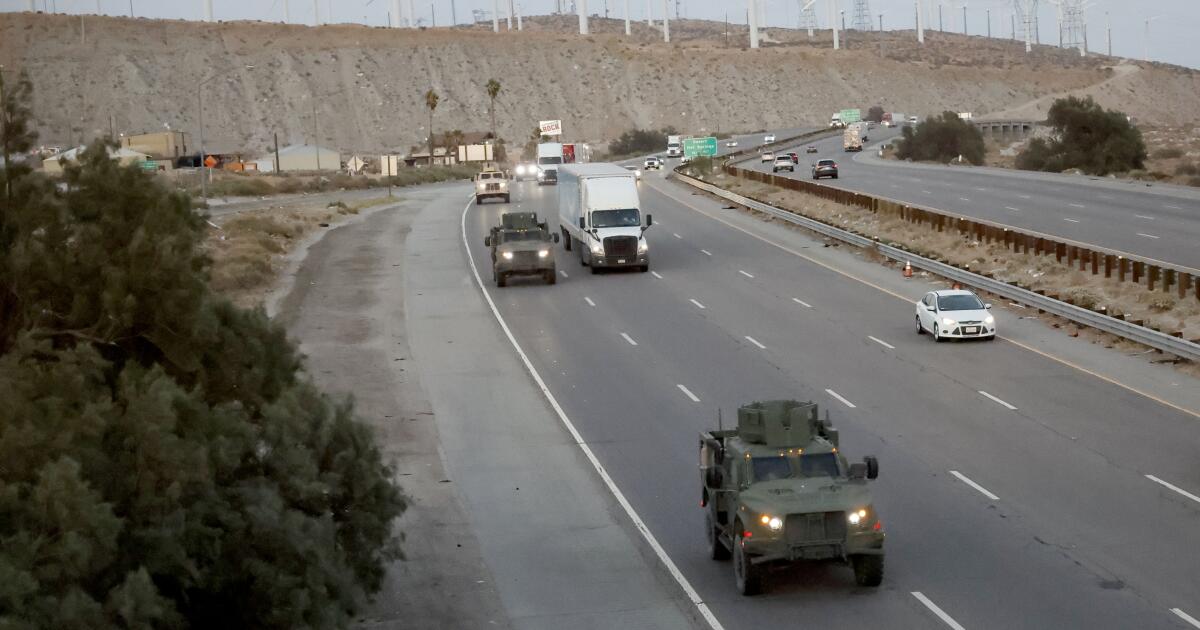California Senator pushes the Pentagon to deploy hundreds of Marines

Two California senators pushed senior military officials on Tuesday to get information on how hundreds of U.S. Marines were opposition to local leaders and what active-duty military personnel were doing on the scene.
In a letter to Defense Secretary Pete Hegseth, Adam Schiff and Alex Padilla asked the Pentagon to explain the protests and unrest during the immigration raid in southern Southern California, explaining the legal basis for the deployment of 700 active-duty Marines.
“The decision to deploy active military personnel within the United States in the most extreme cases, and these decisions are not them,” Schiff and Padilla wrote in the letter. “It is even more unreasonable to have such deployment of objections from national authorities.”
California is challenging the legitimacy of militarization and said in a lawsuit filed Monday that the deployment of the National Guard and Marines violated the 10th Amendment to the U.S. Constitution, which articulates restrictions on federal power.
Schiff and Padilla asked Hegseth to clarify the tasks that the Marines would follow during deployment, as well as the training of troops controlling crowds, using force and relegation.
The Senator also asked if the Department of Defense received any request from the White House or the Department of Homeland Security regarding “Marine Corps Mission and Terms of Responsibilities.”
On Monday, Heggs mobilized the Marines from a base on the Twenty-Nine Palm Trees. On Monday night, the convoy was seen traveling eastward on Highway 10 in Los Angeles.
Schiff and Padilla said Congress received a notice from the U.S. Northern Command on Monday, which said the Marine Corps had been deployed to “recovery orders” and supported about 4,000 state National Guard members who were called on Saturday and Monday.
The senator said the notice said: “No key information is provided to understand the legal authority, mission or rules of participation of Marines involved in domestic deployment.”
The California National Guard was first mobilized by Newsom’s objection.
The president last sent the National Guard to the state without the request of the governor sixty years ago, when President Lyndon B. Johnson mobilized forces in Alabama to defend civil rights protesters and enforced federal court orders in 1965.
Trump and the White House said that military mobilization is legal under Article 10, 12,406 of the U.S. Armed Forces Code. The statute gives the president the power to the president if “rebellion or rebellion is insurgent or dangerous to the authorization of the U.S. government,” but also points out that the guard must be summoned through the governor’s order.
Trump said that without the military’s mobilization, “Los Angeles will be completely wiped out.”
The days of the protests included violent clashes with police and some vacancies and burglaries.
“It’s going in the wrong direction,” Trump said Monday. “It’s going in the right direction now. We want to get Gavin’s support because Gavin is the biggest beneficiary of our solution to his problem. I mean, his condition is a mess.”
On Tuesday morning, Los Angeles Mayor Karen Bass said that the military was not told what the military would do, given that the National Guard had already established the National Guard outside federal buildings.
“It’s absolutely unnecessary,” Bass said. “People asked me, ‘What should the Marines do when they get here?’ That’s a good question.”
Tuesday, California. General Rob Bonta sought a restraining order to prevent deployment.

